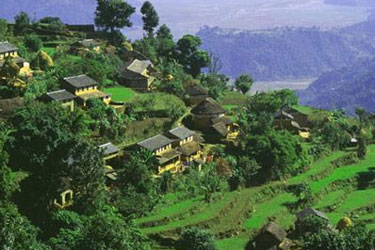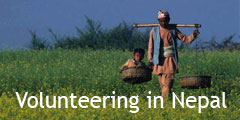Pokhara Tour

Patan Durbar Square: There is no place else I can think of where one can see such an incredible amount of marvellous monuments within a limited space like in the Patan Durbar Square. Besides the Old Royal Palace, the dominating image which truly reflects Patan is the 17th century Krishna Mandir.
The Krishna Mandir
The Patan Dhoka: One of the historical entrances to the old city.
Bhaskerdev Samskarita Hiranyabarna Mahavihara: A Buddhist temple known locally as Golden Temple. Hiranya Varna Mahavihar is also known as Kwa Bahal or Suwarna Mahavihara as well. This multi-storied Buddhist vihar is situated two hundred meters north of the Patan Durbar Square on the way to the five-tiered Kumbheswar Temple. It was built by Vaskar Deva Varma in the twelfth century AD. Though there does not seem to be much recorded in terms of history, it is assumed that it has not been altered since the early nineteenth century.
Patan is one of the major cities of Nepal. Located in the south-central part of Kathmandu Valley. Patan is also known as Manigal. It is best known for its rich cultural heritage, particularly its tradition of arts and crafts. It is called ‘City of Festival and Feast’. Patan is on an elevated tract of land in the Kathmandu Valley on the south side of the Bagmati River, which separates it from the city of Kathmandu on the northern and western side. The Nakkhu Khola (River) acts as the boundary on the southern side. Although adjacent to Kathmandu, Patan is in the Lalitpur District. Rivers being the dividing lines here.
Other landmarks within the square are the marvellous Tushahity, Sundarichowk, Taleju-Temple, The Golden temple and the Terra-Cotta Temple of Maha Bouddha. The Golden Temple entrance is marked by 2 lions (male and female) seen in the photo above. Patan Durbar Square is situated at the centre of Lalitpur city. It is one of the three Durbar Squares in the Kathmandu Valley, all of which are UNESCO World Heritage Sites. One of its attractions is The Ancient Royal Palace where Malla Kings of Lalitpur resided. The three main courtyards in the palace are Mul Chowk, Sundari Chowk and Keshav Narayan Chowk. Besides these courtyards, the complex boasts impressive temples, religious shrines, and historical places, all noted for their exquisite carvings and beautiful display of ancient Newari architecture.
Mahabouddha Temple: Also known as the 1000 Buddha Temple it is modeled after the Mahabouddha temple in Bodh Gaya, Bihar, India. Located in Patan City, the Mahaboudha Temple features some of the finest terra-cotta work in the Kathmandu Valley. It is believed that the monument is based on the famous temple at Bodhgaya which commemorates Lord Buddha's life and contributions. During the sixteenth century, Bodhgaya was a well-known pilgrimage site in the region. When Jivaraja (a Buddhist devotee from Bodhgaya) came to Kathmandu he wanted to build a temple like that of Bodhgaya
Kumbheswor Temple: A Shiva temple with two ponds whose water is believed to come from Gosaikunda. The Kumbeshwar Temple is a five-story temple directly north of Durbar Square in Patan. It was supposedly built in 1392, making it the oldest temple in Patan. Not only is it using the tiered architecture typical of the region; it is one of the finest examples.
The Ratnakar Mahavihar Temple: is a magnificent three-tiered temple in Haklhvihar, Patan. It is also a Vihara complex (or Buddhist monastery); The Northern Indian State of Bihar derives its name from the word "vihara". Not only does this temple house a ‘Sakyamuni Buddha’ statue, It houses The Kumari of Patan. In Nepal a Kumari is a pre-pubescent girl selected from. the Shakya or Bajracharya clan of the Nepalese Newari community. The Kumari is revered and worshiped by some of the country's Hindus as well as the Nepali Buddhists

